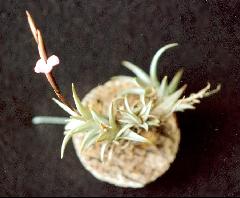
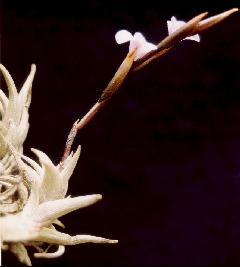
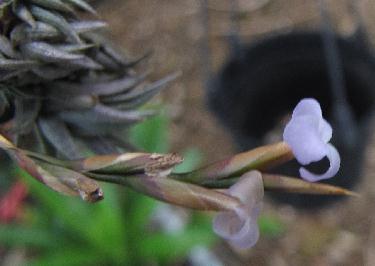
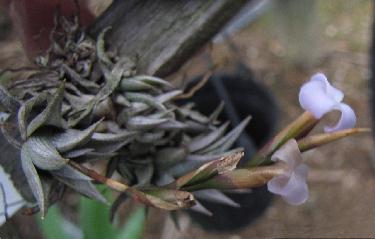
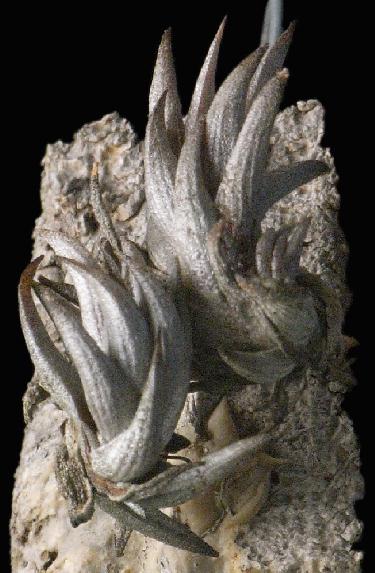
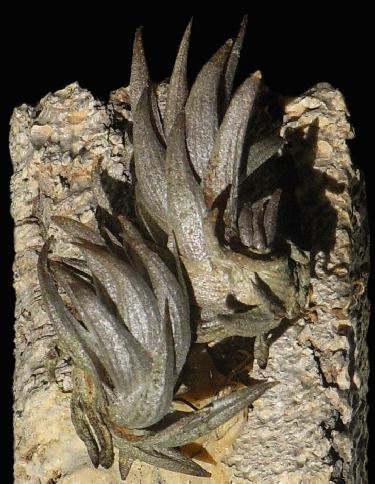
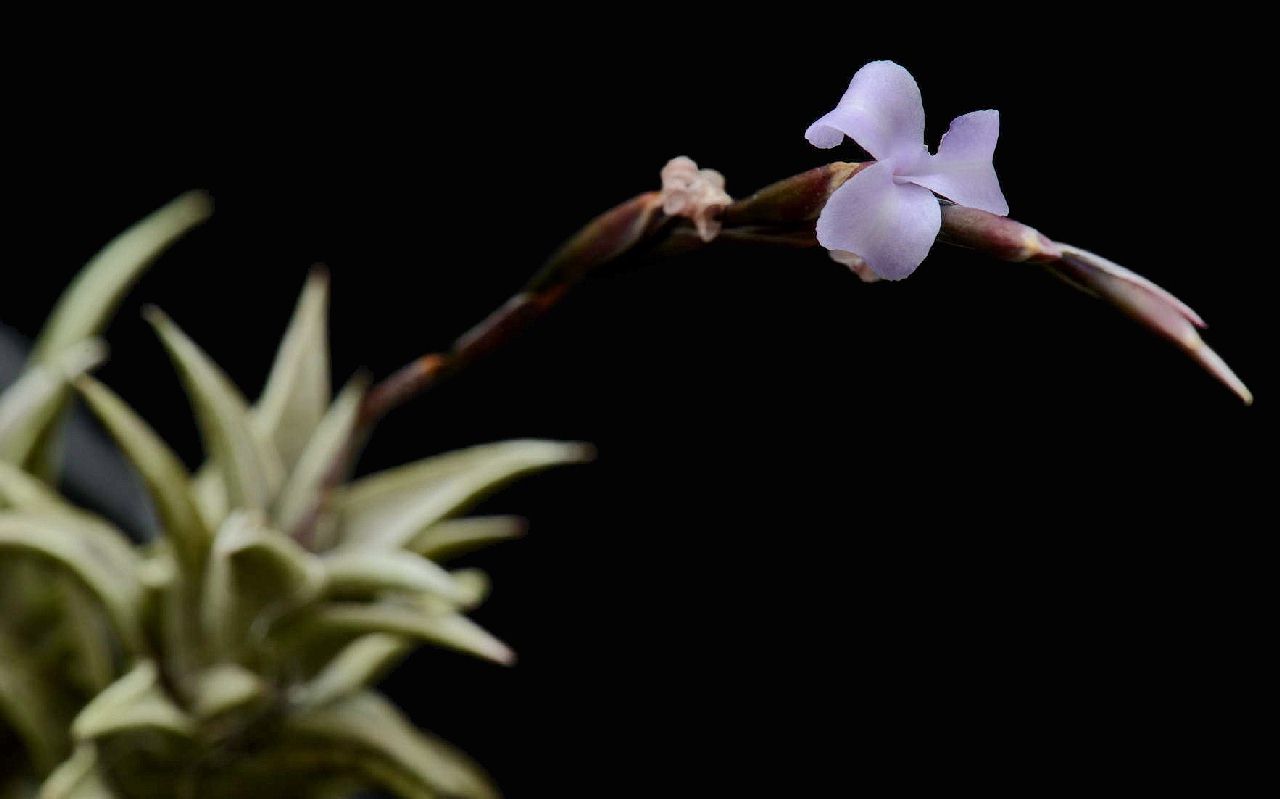
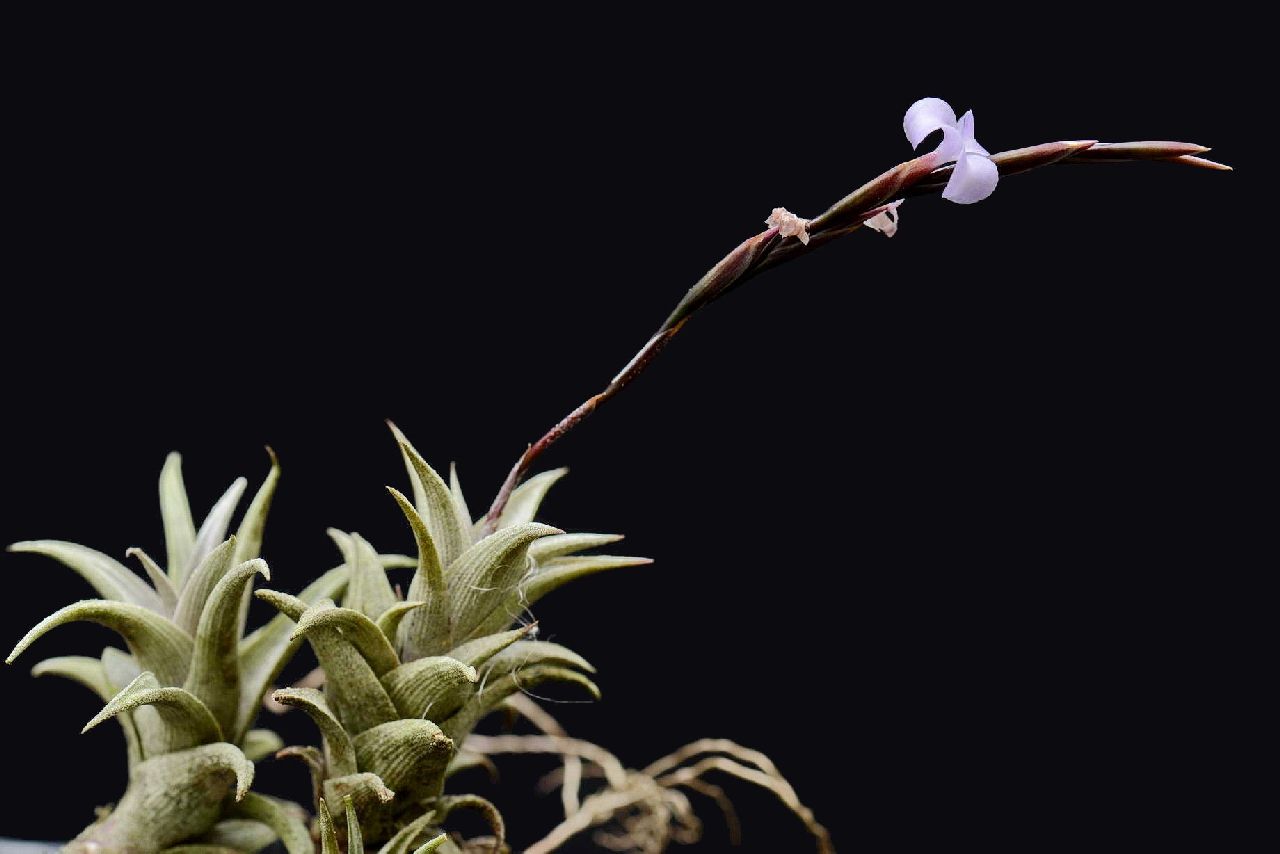
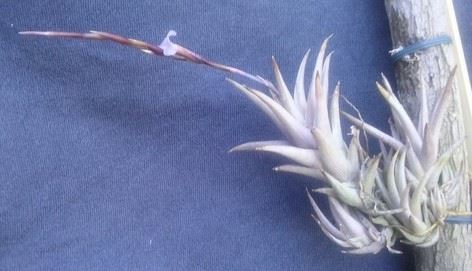
Tillandsia peiranoi Castellanos var. alba J Rutschmann Trop. Subtrop. Pflanzenwelt 58: 32-5 1986
Plant forming a lax clump, single plants with long stem, flowering to 20cm high, living stem 7-10 cm long, with numerous, densely polystichous arranged leaves
Sheaths distinct, 1.5-2 cm long, 1.5 cm wide, same color as the blade, glabrous above the base, underneath densely appressed scaled.
Blade narrow-triangular, acute, to 5 cm long, above the sheath 12 mm wide, erect, strongly canaliculate, weakly succulent, underneath weakly nerved, densely appressed silver-grey lepidote, scales weakly asymmetrically with green center.
Scape 3-4 cm long, thin, 1.5 mm wide, brownish green, glabrous, shiny.
Scape bracts: the bottom ones subfoliate, but much smaller than the leaves, that upper ones haave a long blade, short tipped,as long or shorter than the internodes, enclosing the scape, papery when dry and then nerved, scattered lepidote.
Inflorescence laxly bipinnate, to 11 cm long and 2 cm wide, with 4-6 becoming erect, to 6 cm long side spike.
Rhachis flattened at the side, greenish brown, glabrous; Internodes 1.5-1 cm long.
Primary bracts narrow lanceolate, acute, straw-like when dry, nerved, scattered lepidote, many long as the sterile basal section of the side spike.
Side Spikes with a 5-10 mm high sessile, sloping, keeled peduncle bract, narrow linear, with 2-4,( -6),flowers with upright, thin weakly flexuous, olive-green rhachis.
Floral bracts narrow lanceolate, sharp acuminate, 8-11 mm long, 4 mm wide, ecarinate, but strongly nerved, smooth at first, olive-green, dries like parchment, scattered lepidote at the top, little shorter than the sepals, with a membraneous edge.
Flower to 14 mm long, 3 mm wide Scentless, open for several days
Sepals ecarinate, narrow –lanceolate, acute, to 10 mm long, 4 mm wide, approximately 3 mm high connate, greenish brownish, brown when dry, glabrous.
Petals white, with blunt, 4 x 3mm large, plattes.
Style & Stamens well enclosed. Filaments white with yellow anthers, which exceed the short style.
HOLOTYPUS: B. G. H. 65933, leg.. Dr. J. Rutschmann, Basel, Switzerland, RU/AR 85/1, in the Herb. Inst. System. Bot Univ. Heidelberg (HEID).
Habitat: growing on rocks ( sedimentary), 7 km in the lower half of Cabra Corall at the Rio Pasaje (Prov). Salta, Argentina, 800-900 M
The two varieties are:
var. peiranoi
Single plant with 3-5 cm long stem
Sheath to 10 mm long, 8 mm wide, oval;
Leaf blade about 2 mm long, strongly bent, greenish brown, underneath strongly nerved Inflorescence usually simple;
Petal pale violet.
Quebrada de las Conchas, Santa Rosa, 1200-1400 m, Argentina.
var. alba J. Rutschmann
Single plant with 7-10 cm stem.
Sheath to 2 cm long, 15 mm wide;
Leaf blade usually upright, to 5 cm long, underneath less nerved, very densely lepidote silvery white.
Inflorescence usually bipinnate with 4-6 side spikes
Petals white
Cabra Corall, Rio Pasaje, 800-900 m, Argentina.